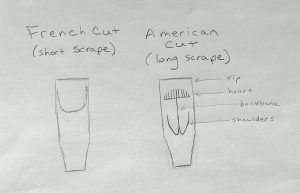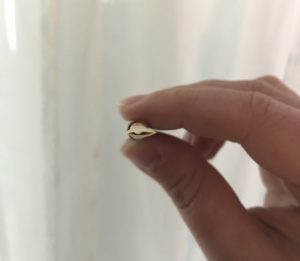As you begin your studies to become an “Oboe Master” you will find that learning about the qualities of a good reed is a very important step in this process. Scroll down to find information on…
1. The difference between French Cut and American Cut oboe reeds.
2. What the opening at the tip should look like in a quality reed.
3. Some information about adjusting reeds. As an oboe player, you will need to learn how to adjust and eventually make your own reeds. A private teacher will be the ideal way to learn this skill, but this website will provide a very general overview.
French Cut/American Cut Reeds

The Tip of Your Reed


Adjusting Reeds
Here are some common problems for reeds, with general suggestions for adjustments you can make. You should only try these fixes to your reed if you have had training on how to do adjustments like these.
- IF THE REED IS FLAT: Possibilities are…Your reed may be cracked and may need to be replaced. It may also be too long or the cane too wide and you could try cutting off about 1 mm on the tip of the reed. It could also be that the opening is too wide and you can try soaking the reed and holding it closed for several seconds.
- IF THE REED IS SHARP: Possibilities are… Your reed may be too short and you could try scraping a bit off the back of the reed to compensate. The opening may be too closed, in which case there are no good adjustments that would help.
- IF THE REED IS STIFF OR STUFFY: You could try making the end of the tip of the reed thinner. You could also scrape a little wood from behind the reed tip. If it looks like back of the reed is generally too thick or if low notes are not speaking well, you could scrape a bit more off, just don’t remove the backbone or the reed will play flat in the higher octaves.
- IF THE REED TOO FREE: Try clipping the tip of the reed and readjust. This can sometimes happen if too much wood has been scraped off the reed, however it is possible that this process will make the reed too sharp, and will ultimately need to be discarded.